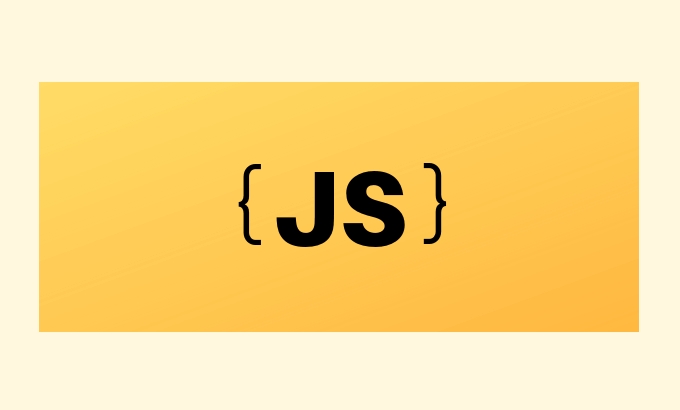Performing Background Tasks with Javascript Web Workers
Jul 09, 2025 am 02:21 AMJavaScript Web Workers are key technologies to improve web page performance and prevent interface lag. It avoids blocking the main thread by creating background threads to perform complex computing tasks, such as data processing, image operations, and encryption and decryption, and thus keeps the page responsive to user interaction. The steps to using Web Workers include: 1. Write a Worker script file; 2. Load the script through new Worker() in the main thread. The communication method is: send messages through postMessage(), and onmessage receives messages, but the transmitted data will be serialized and cannot contain functions or special types. Optimization suggestions include: reuse Worker instances, avoid handling small tasks, pay attention to data transfer performance, and simplify the call process in large projects with Comlink.

JavaScript Web Workers is one of the key tools to solve page stuttering and improve user experience. If your web page needs to perform a large number of computational tasks, such as data processing, image operations or real-time algorithm operations, running these codes directly on the main thread will cause the interface to freeze and users cannot interact. Web Workers provides a multi-threading mechanism that allows you to "thrown" time-consuming tasks into the background for processing.

What are JavaScript Web Workers?
Simply put, Web Worker is a standalone thread running in the browser background. It communicates through messages with the main thread and does not interfere with each other. This means that you can execute complex logic in Worker without affecting page rendering or responding to user actions.

It should be noted that Worker does not have permission to access the DOM and cannot operate any elements on the page. Its original design is to handle pure computing tasks.
Common usage scenarios include:

- Large amounts of data sorting or filtering
- Image pixel processing (such as filters)
- Encryption and decryption operation
- AI computing in the game
How to create a Web Worker?
Creating a Worker is very simple, with only two steps: Write a separate JS file as the Worker script, and then load it in the main script.
Start Worker in the main thread
const worker = new Worker('worker.js');
Listening to messages in worker.js
onmessage = function(e) {
console.log('Data received:', e.data);
// Perform complex calculation const result = heavyComputation(e.data);
postMessage(result);
} Send messages between the main thread and the Worker through postMessage() and receive messages using onmessage . Communication between them is replication rather than sharing, so pay attention to performance when passing big data.
How to communicate with Worker?
The communication method is simple, but there are several details that are easy to ignore:
- The transmitted data will be serialized, so it cannot contain special types such as functions and undefined.
- If the object is passed, the Worker receives a copy, not a reference
-
Transferable Objectscan be used to improve the efficiency of large-block data transmission, such asArrayBuffer
For example, you want Worker to do a Fibonacci sequence calculation:
The main thread sends:
worker.postMessage(40);
Worker receives and returns the result:
onmessage = function(e) {
const n = e.data;
function fib(n) {
return n <= 1 ? n : fib(n - 1) fib(n - 2);
}
postMessage(fib(n));
}The main thread listens for the returned message:
worker.onmessage = function(e) {
console.log('Computation result:', e.data);
}This completes a complete asynchronous calculation task.
Some notes and optimization suggestions
While Web Workers are powerful, there are some limitations and best practices:
- Don't create and destroy Workers frequently, you can reuse one instance to handle multiple tasks
- Worker itself does not support DOM operations, nor does it support certain browser APIs (such as
windowanddocument) - If the project uses module packaging tools (such as Webpack), it may be necessary to specifically configure how the Worker file is loaded
- For small tasks, the overhead of opening Worker may be higher than direct execution, and it should be evaluated reasonably
If the project is large, you can also consider using libraries like Comlink to simplify the use of Worker, making calling Worker functions as convenient as calling ordinary functions.
Basically that's it. Web Workers are not complicated, but they are easily overlooked in actual development, especially in modern web applications that pursue high performance and smooth experience.
The above is the detailed content of Performing Background Tasks with Javascript Web Workers. For more information, please follow other related articles on the PHP Chinese website!

Hot AI Tools

Undress AI Tool
Undress images for free

Undresser.AI Undress
AI-powered app for creating realistic nude photos

AI Clothes Remover
Online AI tool for removing clothes from photos.

Clothoff.io
AI clothes remover

Video Face Swap
Swap faces in any video effortlessly with our completely free AI face swap tool!

Hot Article

Hot Tools

Notepad++7.3.1
Easy-to-use and free code editor

SublimeText3 Chinese version
Chinese version, very easy to use

Zend Studio 13.0.1
Powerful PHP integrated development environment

Dreamweaver CS6
Visual web development tools

SublimeText3 Mac version
God-level code editing software (SublimeText3)
 How to make an HTTP request in Node.js?
Jul 13, 2025 am 02:18 AM
How to make an HTTP request in Node.js?
Jul 13, 2025 am 02:18 AM
There are three common ways to initiate HTTP requests in Node.js: use built-in modules, axios, and node-fetch. 1. Use the built-in http/https module without dependencies, which is suitable for basic scenarios, but requires manual processing of data stitching and error monitoring, such as using https.get() to obtain data or send POST requests through .write(); 2.axios is a third-party library based on Promise. It has concise syntax and powerful functions, supports async/await, automatic JSON conversion, interceptor, etc. It is recommended to simplify asynchronous request operations; 3.node-fetch provides a style similar to browser fetch, based on Promise and simple syntax
 JavaScript Data Types: Primitive vs Reference
Jul 13, 2025 am 02:43 AM
JavaScript Data Types: Primitive vs Reference
Jul 13, 2025 am 02:43 AM
JavaScript data types are divided into primitive types and reference types. Primitive types include string, number, boolean, null, undefined, and symbol. The values are immutable and copies are copied when assigning values, so they do not affect each other; reference types such as objects, arrays and functions store memory addresses, and variables pointing to the same object will affect each other. Typeof and instanceof can be used to determine types, but pay attention to the historical issues of typeofnull. Understanding these two types of differences can help write more stable and reliable code.
 JavaScript time object, someone builds an eactexe, faster website on Google Chrome, etc.
Jul 08, 2025 pm 02:27 PM
JavaScript time object, someone builds an eactexe, faster website on Google Chrome, etc.
Jul 08, 2025 pm 02:27 PM
Hello, JavaScript developers! Welcome to this week's JavaScript news! This week we will focus on: Oracle's trademark dispute with Deno, new JavaScript time objects are supported by browsers, Google Chrome updates, and some powerful developer tools. Let's get started! Oracle's trademark dispute with Deno Oracle's attempt to register a "JavaScript" trademark has caused controversy. Ryan Dahl, the creator of Node.js and Deno, has filed a petition to cancel the trademark, and he believes that JavaScript is an open standard and should not be used by Oracle
 Handling Promises: Chaining, Error Handling, and Promise Combinators in JavaScript
Jul 08, 2025 am 02:40 AM
Handling Promises: Chaining, Error Handling, and Promise Combinators in JavaScript
Jul 08, 2025 am 02:40 AM
Promise is the core mechanism for handling asynchronous operations in JavaScript. Understanding chain calls, error handling and combiners is the key to mastering their applications. 1. The chain call returns a new Promise through .then() to realize asynchronous process concatenation. Each .then() receives the previous result and can return a value or a Promise; 2. Error handling should use .catch() to catch exceptions to avoid silent failures, and can return the default value in catch to continue the process; 3. Combinators such as Promise.all() (successfully successful only after all success), Promise.race() (the first completion is returned) and Promise.allSettled() (waiting for all completions)
 What is the cache API and how is it used with Service Workers?
Jul 08, 2025 am 02:43 AM
What is the cache API and how is it used with Service Workers?
Jul 08, 2025 am 02:43 AM
CacheAPI is a tool provided by the browser to cache network requests, which is often used in conjunction with ServiceWorker to improve website performance and offline experience. 1. It allows developers to manually store resources such as scripts, style sheets, pictures, etc.; 2. It can match cache responses according to requests; 3. It supports deleting specific caches or clearing the entire cache; 4. It can implement cache priority or network priority strategies through ServiceWorker listening to fetch events; 5. It is often used for offline support, speed up repeated access speed, preloading key resources and background update content; 6. When using it, you need to pay attention to cache version control, storage restrictions and the difference from HTTP caching mechanism.
 JS roundup: a deep dive into the JavaScript event loop
Jul 08, 2025 am 02:24 AM
JS roundup: a deep dive into the JavaScript event loop
Jul 08, 2025 am 02:24 AM
JavaScript's event loop manages asynchronous operations by coordinating call stacks, WebAPIs, and task queues. 1. The call stack executes synchronous code, and when encountering asynchronous tasks, it is handed over to WebAPI for processing; 2. After the WebAPI completes the task in the background, it puts the callback into the corresponding queue (macro task or micro task); 3. The event loop checks whether the call stack is empty. If it is empty, the callback is taken out from the queue and pushed into the call stack for execution; 4. Micro tasks (such as Promise.then) take precedence over macro tasks (such as setTimeout); 5. Understanding the event loop helps to avoid blocking the main thread and optimize the code execution order.
 Understanding Event Bubbling and Capturing in JavaScript DOM events
Jul 08, 2025 am 02:36 AM
Understanding Event Bubbling and Capturing in JavaScript DOM events
Jul 08, 2025 am 02:36 AM
Event bubbles propagate from the target element outward to the ancestor node, while event capture propagates from the outer layer inward to the target element. 1. Event bubbles: After clicking the child element, the event triggers the listener of the parent element upwards in turn. For example, after clicking the button, it outputs Childclicked first, and then Parentclicked. 2. Event capture: Set the third parameter to true, so that the listener is executed in the capture stage, such as triggering the capture listener of the parent element before clicking the button. 3. Practical uses include unified management of child element events, interception preprocessing and performance optimization. 4. The DOM event stream is divided into three stages: capture, target and bubble, and the default listener is executed in the bubble stage.
 A JS roundup of higher-order functions beyond map and filter
Jul 10, 2025 am 11:41 AM
A JS roundup of higher-order functions beyond map and filter
Jul 10, 2025 am 11:41 AM
In JavaScript arrays, in addition to map and filter, there are other powerful and infrequently used methods. 1. Reduce can not only sum, but also count, group, flatten arrays, and build new structures; 2. Find and findIndex are used to find individual elements or indexes; 3.some and everything are used to determine whether conditions exist or all meet; 4.sort can be sorted but will change the original array; 5. Pay attention to copying the array when using it to avoid side effects. These methods make the code more concise and efficient.






